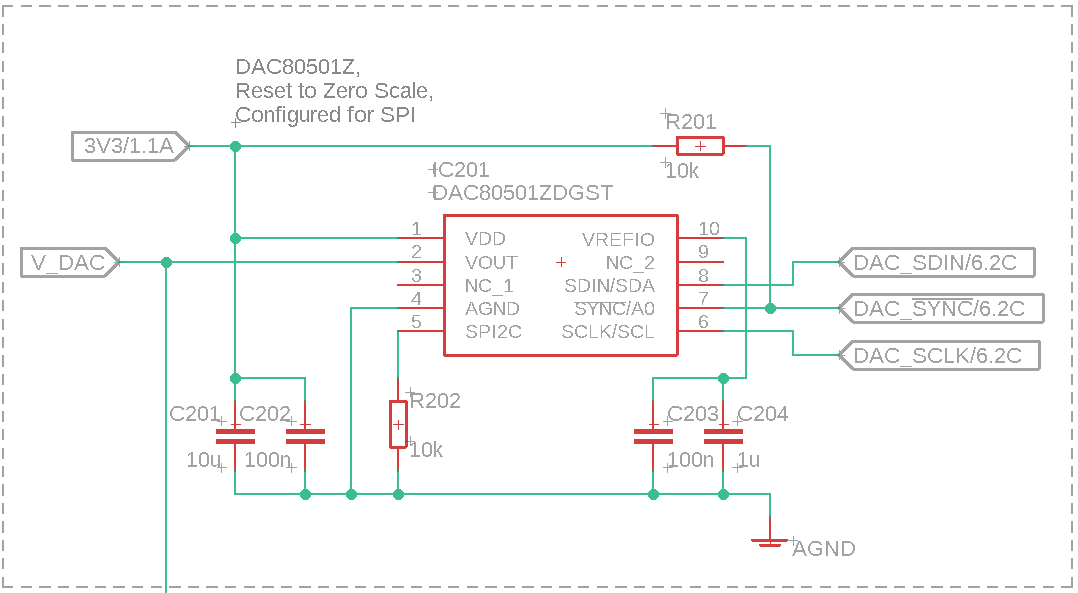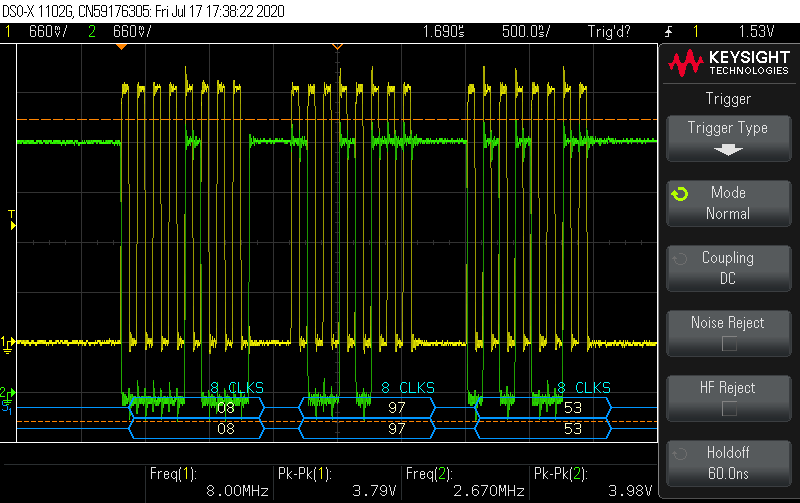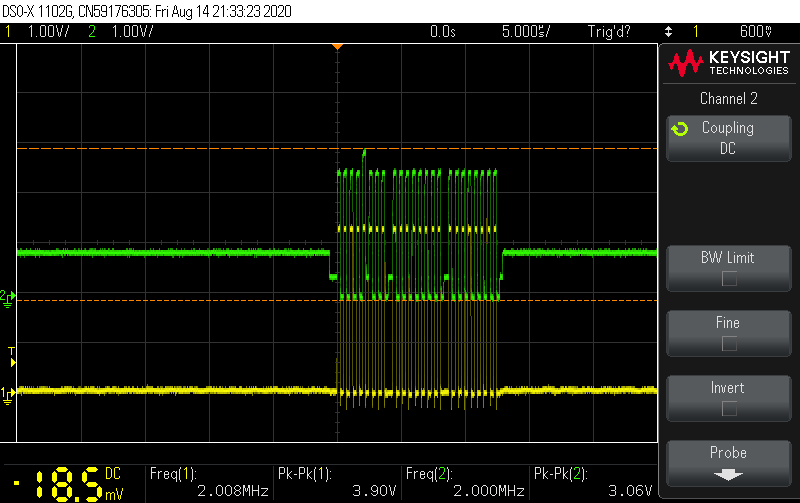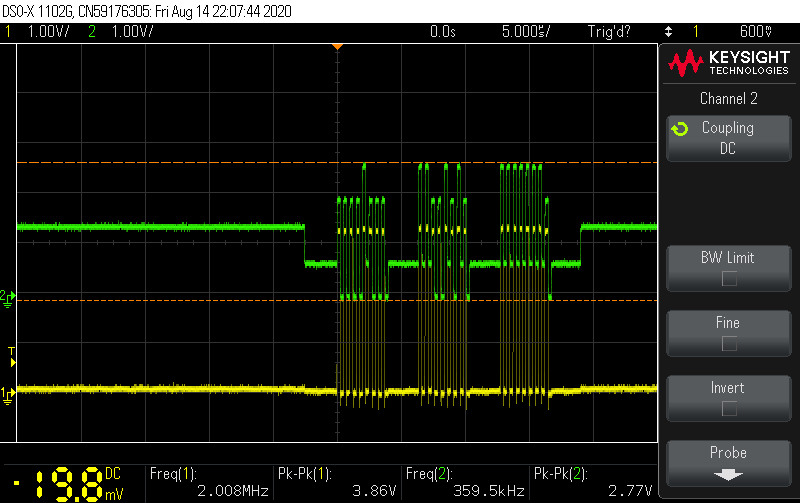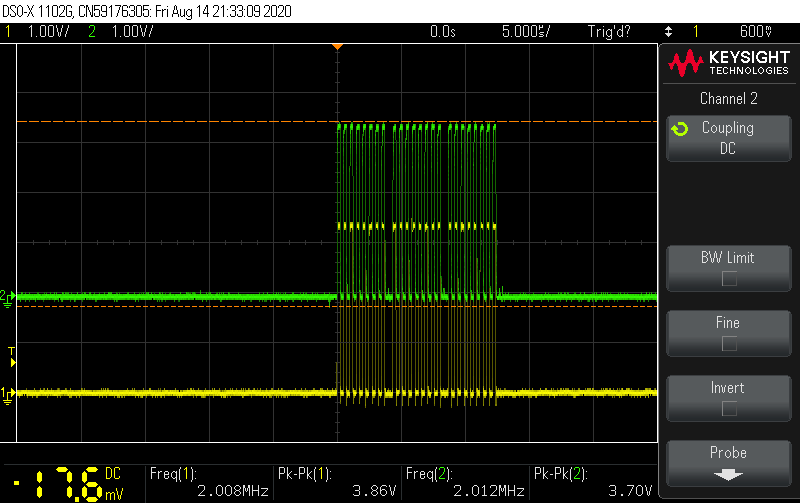Other Parts Discussed in Thread: ADS1262,
Hey there,
I need some help with debugging a project using the DAC80501Z in VSSOP package, which seems to be the main difference to other SPI communication related posts.
See the schematics below. The 3 SPI Lines are connected to the Microcontroller via 47R Resistors. The output is connected to an OpAmp Input via a RC-Lowpass (715R, 1nF).
Unfortunately, the DAC does not show any sign of receiving any SPI commands. I tried disabling the internal reference as often suggested in these forums, but writing 0x03 01 00, the reference Voltage still remains at 2.5V. I also tried reset command 0x05 00 0A, set the GAIN register to REF-DIV 0 and BUFF-GAIN 0 with 0x04 01 00 and send multiple DAC codes like 0x08 80 00. Whatever I do, I fail to detect any changes in the DAC state. The Output always stays at 0V.
I already tried SPI speeds from 1MHz to 50MHz and SPI modes 1 and 2 (falling edge detection). With an SPI capable oscilloscope, I checked the transactions, which seem perfectly fine: Clock idles, Chip Select goes Low, the 3 Bytes are transferred, Chip select goes high again. I also tried like 2 µs delays between Chip Select and the byte transactions to no effect.
On the same SPI line, there is also an ADS1262, with which the SPI communication works flawlessly (8MHz, SPI Mode 1). It does not seem to interfere with the DAC communication, the MISO line stays low.
Two hardware prototypes are manufactured so far, and both show the same behaviour. Electrical tests do show that nothing is connected to somewhhere that it should not be. Maybe the 10k pulldown resistor value on SPI2C is to great and thus, the device bever enters SPI mode?
Help would be greatly appreciated.



